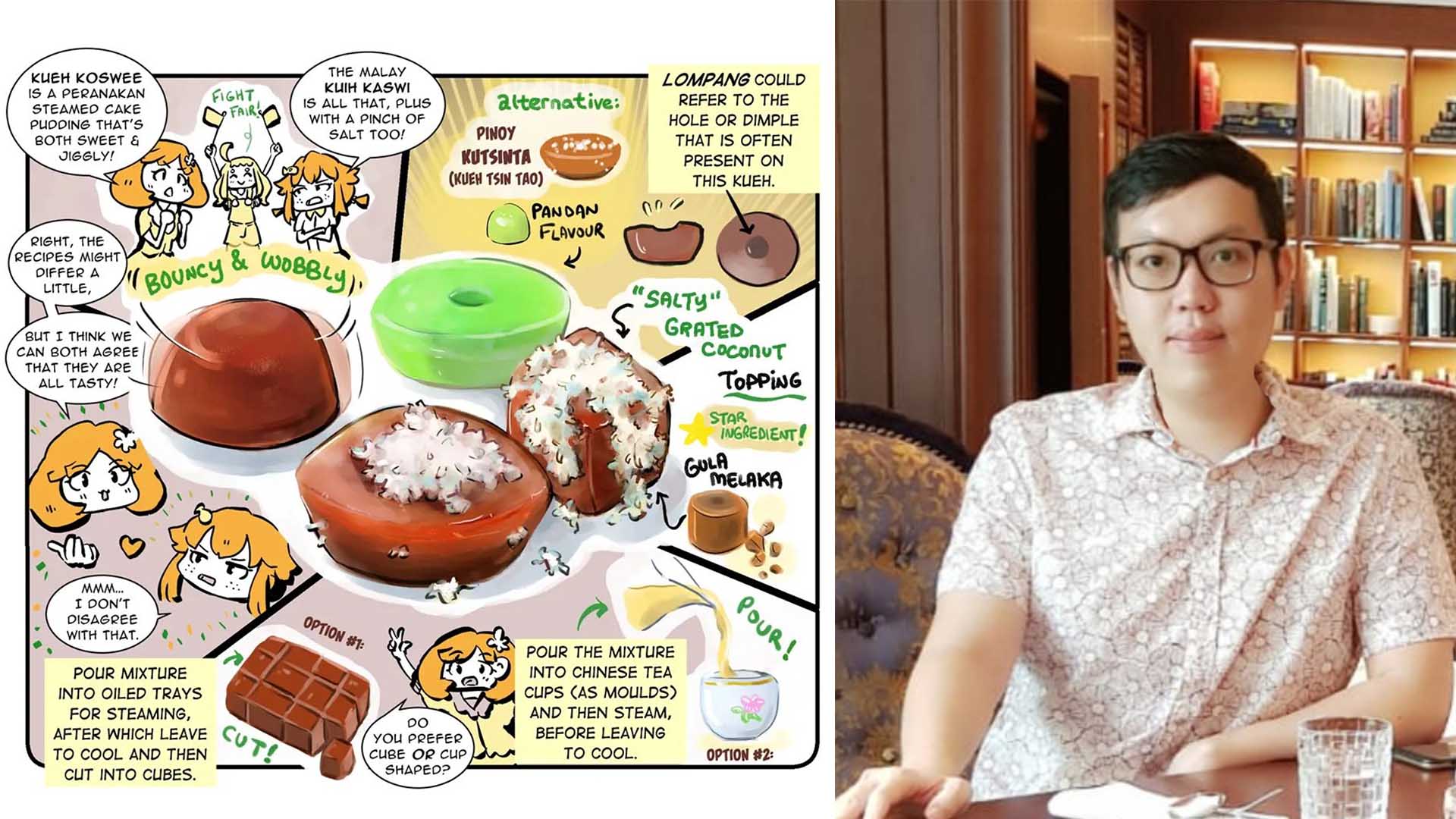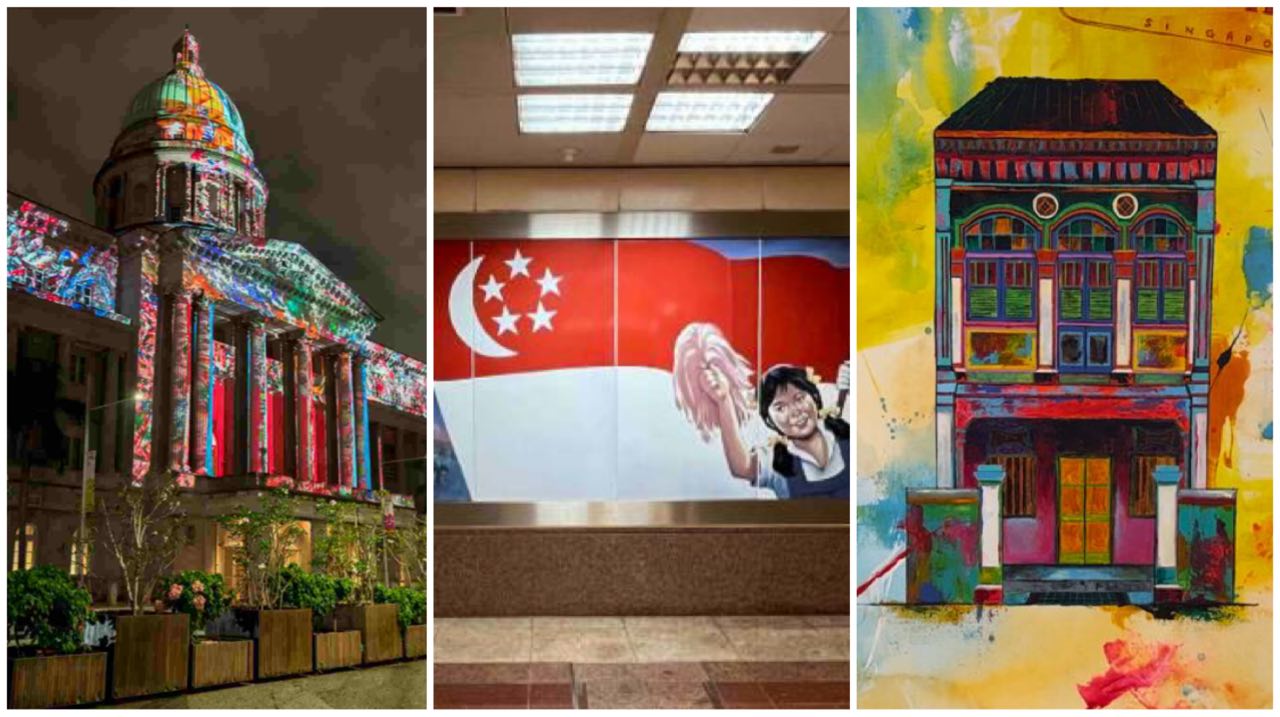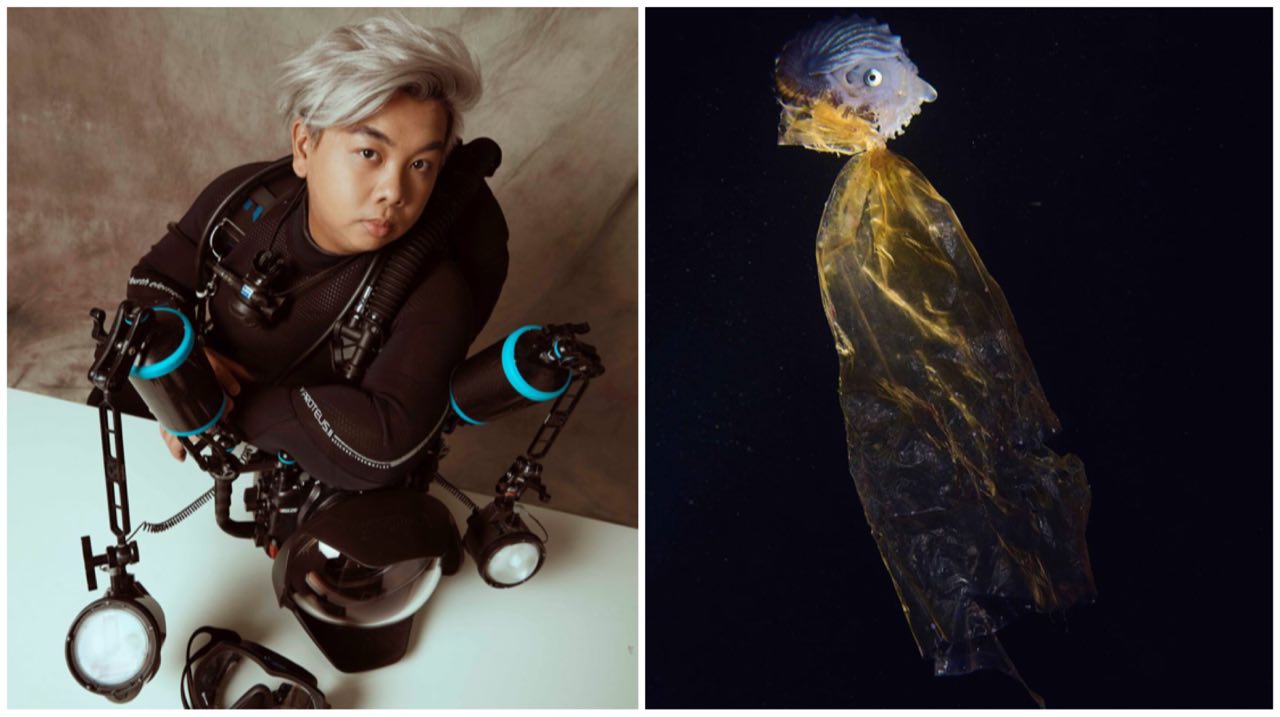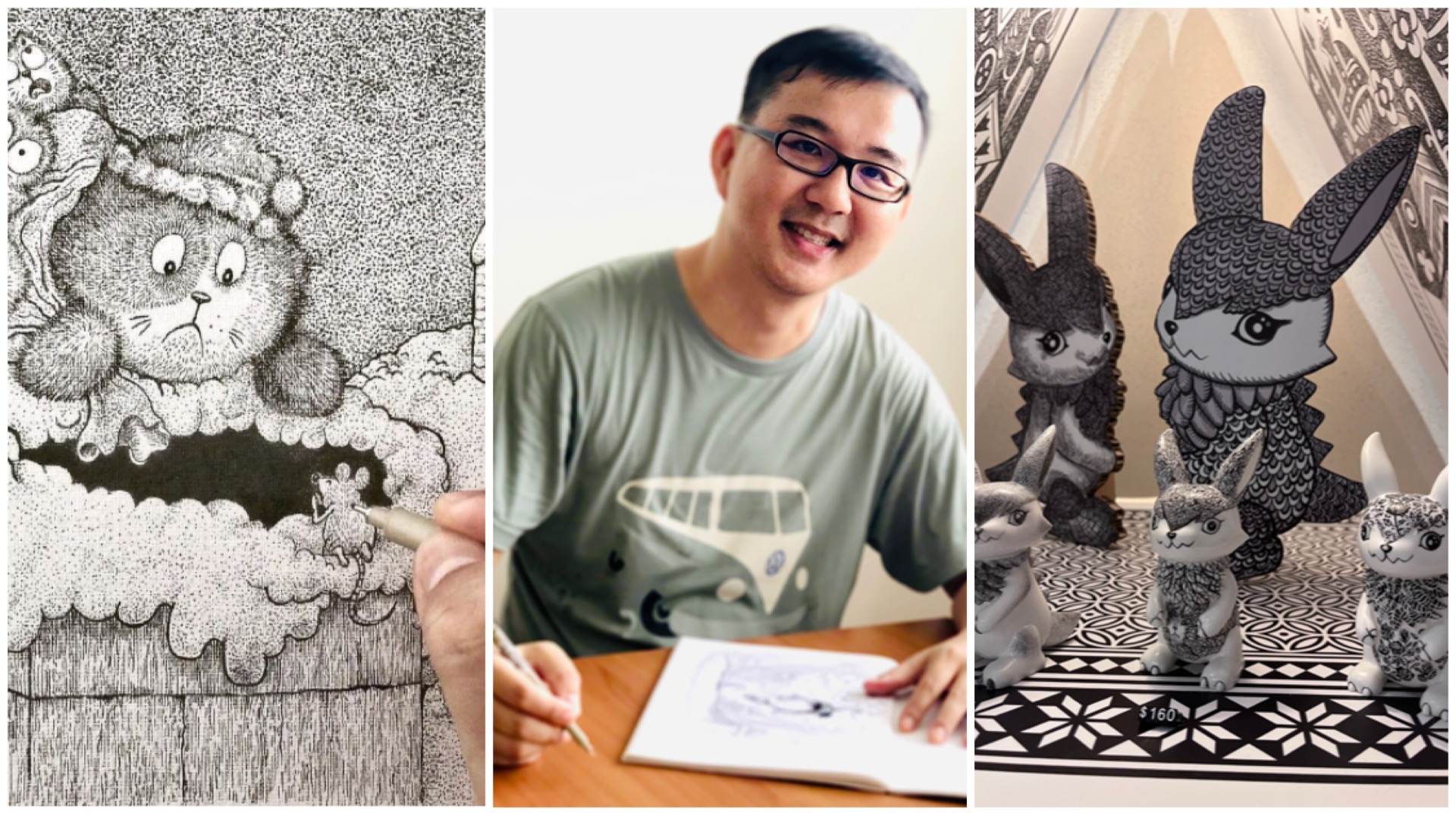Artist Behind The Art: NS Stint Cemented Kueh Enthusiast’s Decision To Pursue Art
It’s impossible not to feel stomach pangs while scrolling through Clement Tea (a.k.a. Clement Tan)’s Instagram account. Since 2019, the 35-year-old Singaporean has been posting lovingly-drawn illustrations of kueh, alongside essay-long captions describing their origins, their taste profiles, and how even tips on how to enjoy them.
As to what spurred this passion for illustrating kueh, Clement says that he initially started researching kueh for a fantasy story that he's writing on the side. "What began as mere research soon transformed into a full-blown interest, and eventually I was gobbling up anything kueh-related, both literally and metaphorically."
"Maybe she was sick of having to listen to me ramble on about kueh 101s but when one of my good friends learned about my ongoing kueh research, she strongly urged me to compile them into a series of artworks so that other folks can learn about them too. Her support spurred me to make a zine version (pictured below) of my kueh illustrations that was sold independently at a Sydney anime convention in 2019, and fast forward two years I am planning a soon-to-be-released paper-bound printed book as well as e-book versions."
We spoke to Clement about his love for kueh, his journey as a digital illustrator, and the unlikely catalyst for his decision to become an artist.
What inspired you to become an artist? Can you remember some of the first things you ever illustrated?
Growing up in the early 90s, I read a lot of comics like Doraemon, Old Master Q, Garfield and Mr. Kiasu. While I was never really that good at writing nor drawing, I figured I could cover up both weaknesses by combining the two aspects into one – the comic way.
One of the earliest stuff I drew were some self-taught comics during my Primary school days (see images below) and despite them being remarkably atrocious, I fondly remembered attracting quite the crowd of schoolmates who would gathered around me during recess period just to read my work.
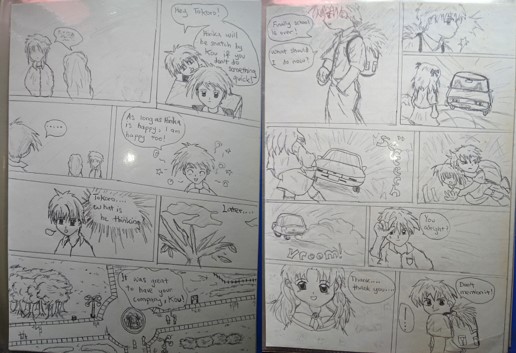
For the adolescent me, it was all for fun and laughter and I sadly did not maintain that passion to draw after moving onto secondary school and until my National Service (NS). That was almost a decade worth of time regrettably not honing my skill.
Prior to NS enlistment, I had no intentions in pursuing arts as I was under the influence that being an artist in Singapore (back when it was in 2000s) was not a viable career path, or at least not a job prospect that could earn you enough dough to live comfortably here.
Fortunately for me, my mandatory two years stint in NS provided ample time for me to re-evaluate what I really want to do with my life moving forward. Within two months after I became operationally-ready (ORD) I chose to enrol at Nanyang Academy of Fine Arts. From there, I met plenty of like-minded people and built connections that would inevitably helped paved my path into the local arts scene. I don't think I would have come to that life-changing decision if I had never gone through the "sabbatical leave" that was my NS days.

How long does it take you to do each post – from conceptualising, to researching, to writing and illustrating?
Apart from me being a relatively slow illustrator, it generally takes about at least 6-8 hours without breaks to construct each post from start to finish – with everything being done digitally. I often go back and forth between researching, illustrating and planning, and more often than not, the finished work tends to look different as compared to my initial concept because of the changes that just happen in between.
As I am my own editor and proof-reader, I also spend extra time and effort to ensure that the research and information are as accurate as I could gather by myself. There too were occasions where I had gone back and made significant amendments to the illustration itself even after uploading it as a Instagram post. With every kueh post I do, I am constantly learning new things about them at the same time.
What is the most enjoyable – as well as the most challenging – thing about drawing this series?
Because my kueh illustrations are not drawn to be photo-realistic, it is actually the easiest part to tackle. On the contrary, it is the research and writing that is the most challenging for me. I would fact-check from multiple sources, conceptualise then plan out how I can fit as many key information as I can into my illustration. Not to mention making spontaneous trips to hunt down and eat each kueh I am researching for the week - many people have assumed that I just love eating kueh, but it is usually for work-purposes, really!
The other challenging aspect is the added condition of me striving to keep this series as jargon-friendly and informative as possible while not overloading it with too many heavy details. I still want to make it accessible for my main target audience who are both young children and foreign readers who may not necessarily know anything about kueh.
Just the thought of introducing the world of kueh to more people through my series is ultimately what makes this entire labour-intensive process both enjoyable and worthwhile to me.
What is the most surprising thing you've found about kueh in Singapore while doing the research for this project?
I learned that there are easily more than hundred of different kueh! And although majority of the kueh we know originated outside of Singapore, a wide variety of them continue to survive in stalls and are still sold within our heartlands. I would really love to gather all (or at least most) of the kueh I have featured in my illustration series and eat them in one mukbang sitting – that would make for a rather compelling video content, I dare say so myself, haha.
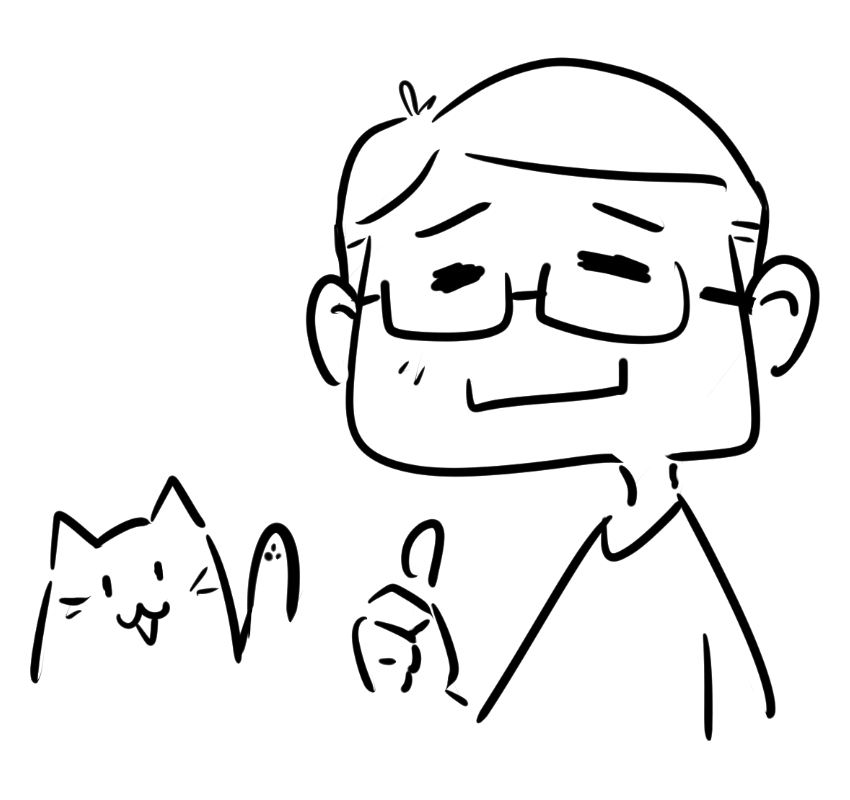
What do you enjoy the most about being an artist/illustrator in Singapore?
I enjoy being part of the small but growing comic artist community on this tiny red dot. I am fortunate enough to personally know a few notable Singapore-based cartoonists such as Mr. Wee Tian Beng and Mr. Sonny Liew. Despite being a small country, Singapore offers plenty of opportunities to showcase and market your artwork – e.g. flea market, mini-conventions, reliable internet connection and serviceable postal network.
I would like to see our local comic scene grow even bigger and create more great works for the world to see - of course, I aspire to stand on the same international stage someday as well.
On a side note but not unrelated, I also helped maintain a non-profit SG comic artist online directory Comix.sg
For the latest updates on Wonderwall.sg, be sure to follow us on Facebook, Instagram and Telegram. If you have a story idea for us, email us at [email protected].







